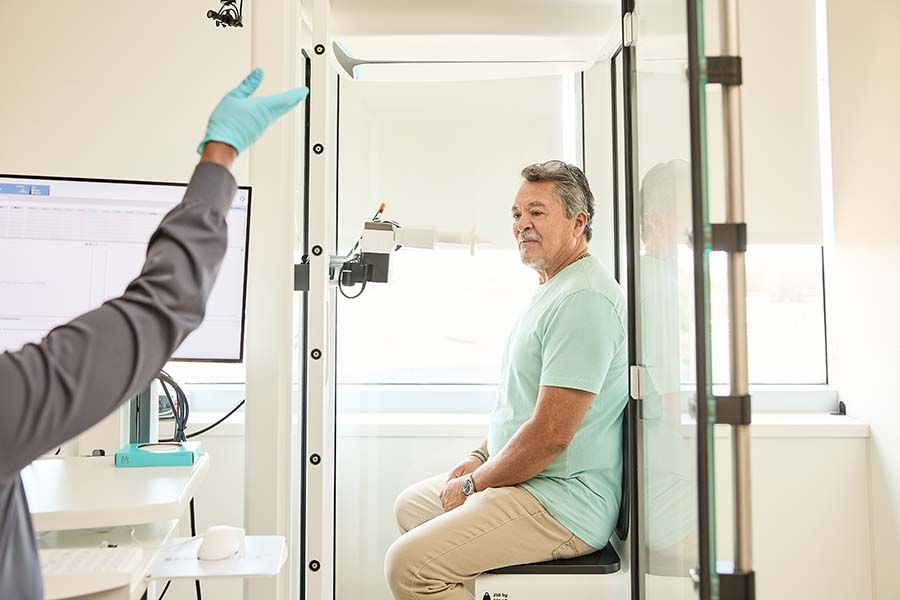Temple Lung Center Director, Dr. Gerard Criner, is an internationally recognized leader in the development of breakthrough therapies for patients with lung disease, including chronic obstructive pulmonary disease (COPD) and its most severe form, emphysema.
Until now, treatment options for COPD were largely limited to medication, oxygen therapy and major surgery. Temple Lung Center’s unique combination of clinical care and research — led by Dr. Criner — makes it a national leader in the development of a new minimally invasive treatment for COPD.
This new technique, called bronchoscopic lung volume reduction (BLVR), has the potential to help patients who were otherwise untreatable.
Q: Why is emphysema such a difficult disease to treat?
Dr. Criner: Portions of the lung are destroyed from breathing cigarette smoke or some other pollutants that cause the airways to enlarge. That's an irreversible process which doesn't respond well to any medications.
Patients who suffer from severe emphysema experience hyperinflation — emphysemic lung tissue is like a flabby balloon that doesn't deflate. Exhaled breath becomes trapped in the lungs, where it is caught in large pockets formed by the rupture of the lung's tiny air sacs.
For these patients, the simplest things such as walking across the room, picking up a grandchild, going up a flight of stairs, or even brushing their teeth can make them short of breath. They feel fatigued. It may get to the point where nothing can help, leaving major surgery (such as lung volume reduction surgery or lung transplantation) as the only remaining treatment option.
Q: Are there treatment approaches other than surgery?
Dr. Criner: Yes, there is actually a minimally invasive approach called bronchoscopic lung volume reduction (BLVR) that doesn’t require a single incision. It works by closing off the diseased lung region, allowing healthier regions to work more efficiently.
Q: How does that work, exactly?
Dr. Criner: At Temple Lung Center, we've led research over the last 30 years looking at different interventions — whether it's medicines or physical therapy or devices — that could help people live a better quality of life, and in some cases a longer life. BLVR is a result of this research.
With BLVR, a flexible catheter and a tool called a bronchoscope are used to place tiny valves in the lungs, blocking off diseased parts to help reduce shortness of breath.
Using this technique of putting a valve in an airway to make the lung smaller can result in significant improvements in lung function, quality of life, physical activity, and even decreased flare-ups of the disease.
Recovery time is typically much faster than a traditional "open" surgery.
Q: Is BLVR a widely used treatment option?
Dr. Criner: The Temple Lung Center team has the most experience with this technique in the country. We are training physicians from around the United States in its use. I perform this procedure using two types of these endobronchial valves, both of which received FDA approval spurred by national clinical trials in which the Temple Lung Center played a pivotal role.
Q: What do you find most rewarding in your work?
Dr. Criner: I guess the most attractive part of Temple Lung Center is that for 30 years now, we’ve been at the forefront of research and been able to contribute to changing the treatment paradigm for many of the patients we see.
The reward of seeing patients who were basically untreatable and dissatisfied with their quality of life, whose life can now be transformed because of these new therapies — that's the most satisfying thing and that's what makes Temple unique.
Helpful Resources
For Patients
- COPD — Frequently asked questions
- Read Leslie’s story about having emphysema
- Find a COPD doctor near you
For Physicians
- Refer a patient
- About Temple’s COPD Program
- Read more on bronchoscopic lung volume reduction

